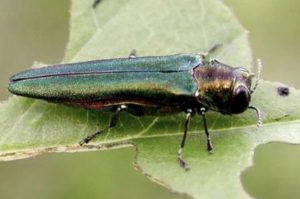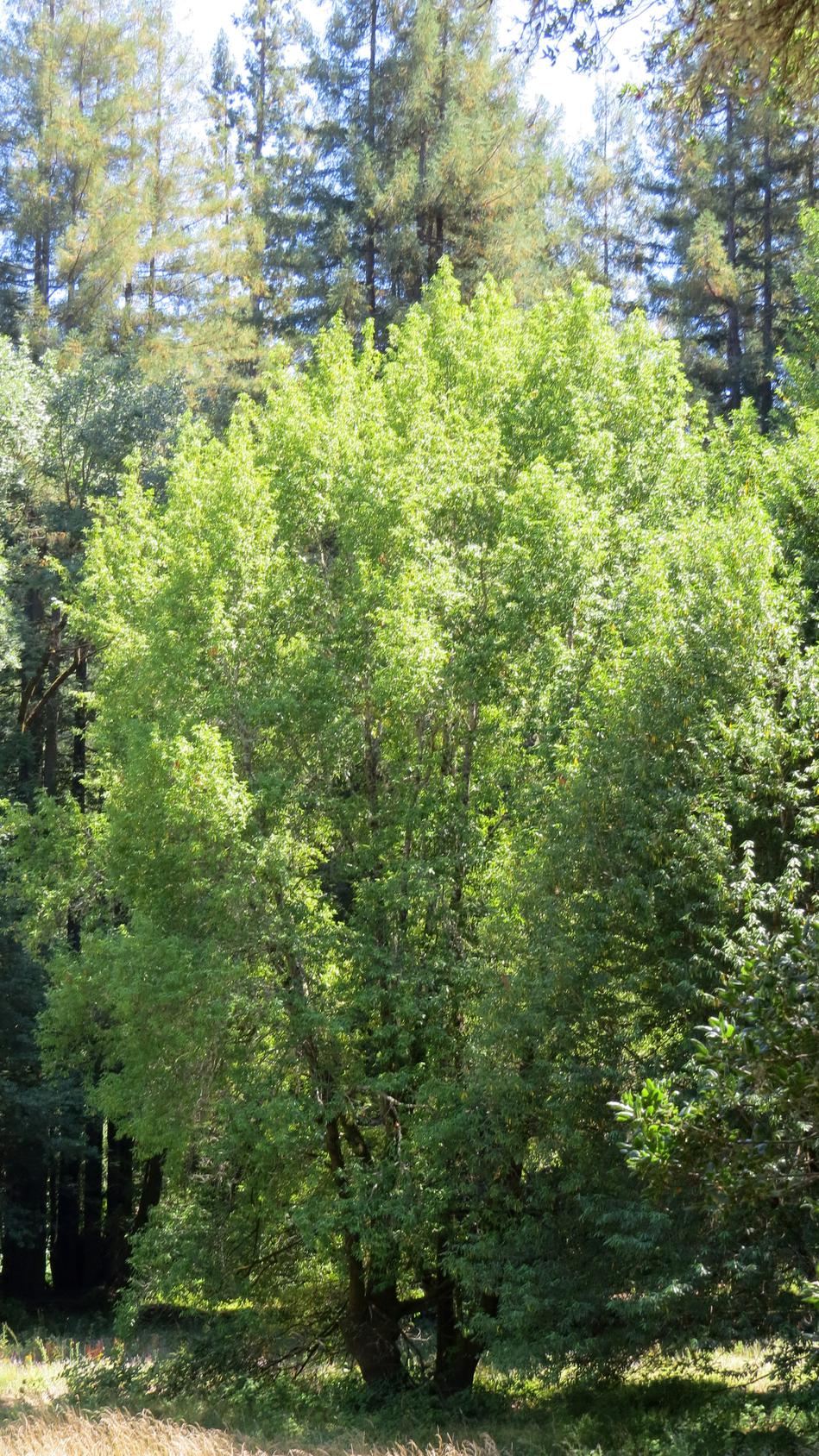SALEM, Ore – The long-anticipated arrival in Oregon this summer of the destructive emerald ash borer sharpens concerns about the impacts to urban forests, wetlands and streams.
Wyatt Williams is the Oregon Department of Forestry’s Invasive Species Specialist. He helped collaborate on the state’s response plan to emerald ash borer (EAB), published in March 2021. And for the past couple years he has been managing a federal grant to try and save the gene pool of the state’s only native ash species ahead of a pest that could wipe it out.

Within a decade of EAB’s arrival in an area, most ash trees will be dead or dying. The concern in Oregon is for Oregon ash because of the important ecological role it plays along streams and in wetlands.
Oregon ash (Fraxinus latifolia) is a deciduous hardwood tree found most commonly in wetlands and along streams. “It’s an ecologically vital tree as it shades water, keeping it cooler for fish. The roots stabilize streambanks, reducing erosion. And lots of animals, birds and insects eat the seeds and leaves. Losing it will likely have a huge impact on those ecosystems,” Williams explained.
“ODF has used the advance notice that EAB was heading west to gather up seed from throughout Oregon ash’s range in the state,” said Williams. “The first goal is to try and preserve as much of the tree’s genetic diversity as we can before it’s lost. The U.S. Forest Service’s Dorena Genetics Resource Center in Cottage Grove stores the ash seeds and is sharing them with researchers. The researchers will test for any resistance to EAB. If any is found, we might then be able to breed resistance into local strains and replant streambanks.”
Urban forests will see impacts
Ash species from the central and eastern United States and Europe are commonly planted as ornamentals in Oregon, said ODF’s Urban and Community Forestry Assistance Program Manager Scott Altenhoff. “The state has been warning communities for years to prepare for this pest and have plans in place for dealing with the loss of ash trees.”
Altenhoff advises cities and towns to do three things this summer if possible.
“First, if it hasn’t been done already, inventory trees to see how vulnerable the local urban forest is to losses from emerald ash borer. We have a common software called TreePlotter that’s free for communities to use. As data come in from around the state, it will give us a common picture of where all the vulnerable urban trees are,” said Altenhoff.
“Second, now is a good time to remove ash trees from approved street tree lists as has been done in Portland. Olive trees, which are in the same family as ash, can also be vulnerable,” he said.
“Finally, consider how wood from ash trees that die from emerald ash borer might be used locally,” Altenhoff said. “There may be opportunities to help local woodworkers and artists and keep the wood from going to waste. But it is crucial that people not move ash or any other wood beyond their local area. That avoids people accidentally spreading wood-boring pests faster than they would otherwise.”
While the beetle doesn’t bite or sting and is otherwise harmless to people, pets, and animals, it has proven deadly in another way. “Research revealed that where the tree canopy was dominated by ash, the rapid removal of all those trees led to higher than expected deaths among residents. So loss of urban trees is harmful to people,” said Altenhoff.
He advises communities to prioritize removal of ash trees that are already in poor health or growing in spaces too small for them. “Starting to steadily replace ash will spread out the costs and impacts better than waiting for a massive die-off,” said Altenhoff. “Fortunately, there are many alternative tree species, including Oregon white oak, incense cedar and Chinese pistache, that might be more heat and drought resistant than ash”.
To report sightings of emerald ash borer please make a report online at the Oregon Invasive Species Council hotline. View the state’s plan for EAB here.
For more information about impacts of EAB to Oregon’s urban forests and the risks to native ash trees please visit ODF’s Forest Health page.


